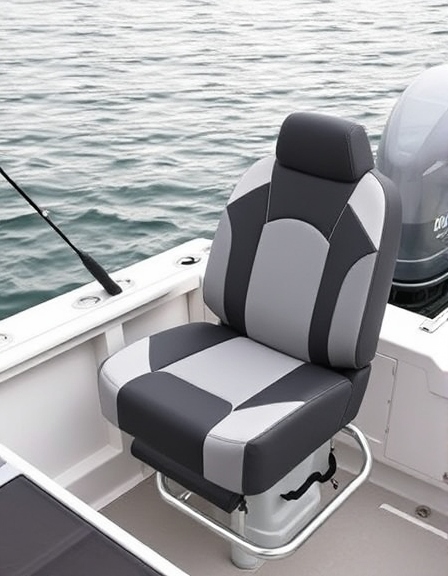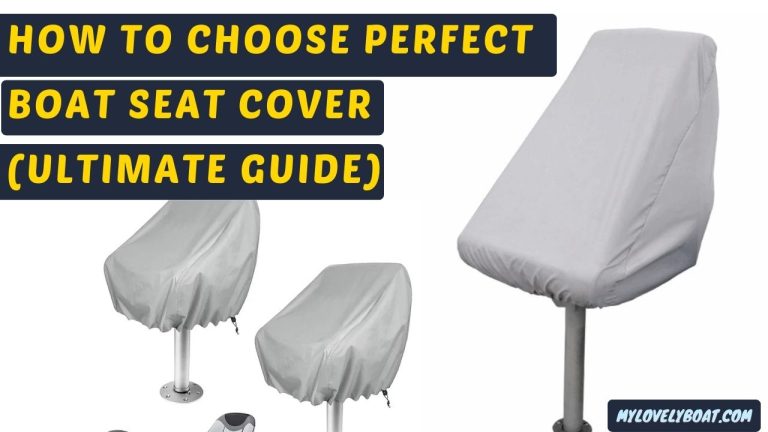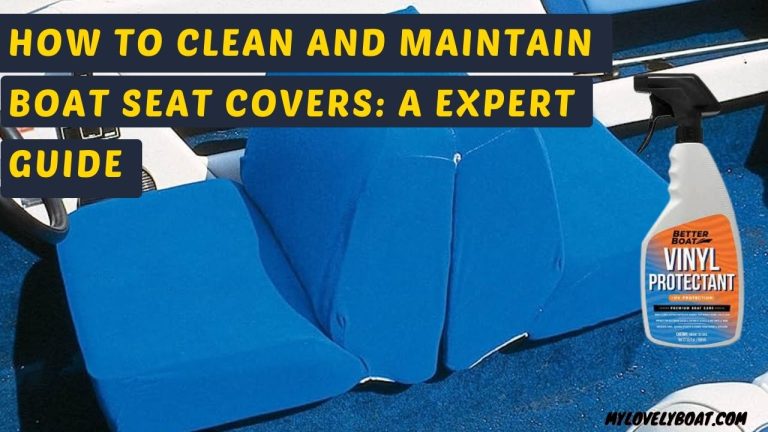
To maintain the durability and performance of your boat seats, it’s crucial to store them during the off-season properly. Our guide offers ten dependable ways to keep your boat seats when not in use securely. By implementing these proven techniques, you can rest assured that your investment is protected and your seats will be ready for use when the boating season returns. Suitable storage methods allow you to preserve your boat seats during the off-season confidently.
Importance of Storing Boat Seats Properly
Proper storage of boat seats is crucial for the following reasons:
- Preserving seat materials: Exposure to harsh elements like UV rays, water, and humidity can damage seat materials, causing them to fade or become moldy.
- Maintaining seat functionality: Properly storing your boat seats will prevent mechanical issues, such as rusting or jamming of moving parts.
- Safety and comfort: Well-maintained seats make for a safer, more comfortable experience on the water.
- Preventing pests and odors: Proper storage keeps seats free from problems and foul odors, making your trip more pleasant.
- Cost-effectiveness: Proper boat seat storage can extend the life of your chairs and save you money in the long run.
10 Methods to Store Your Boat Seats Safely During Off-Seasons
Methods -1
Clean Your Boat Seats: Removing Dirt, Grime, and Debris
Before storing your boat seats, it’s essential to clean them thoroughly using warm soapy water and a bristle brush. This will help remove all dirt, grime, and debris, ensuring they remain in good condition for next year’s boating season.
Tips for Cleaning Boat Seats:
- Use mild soap: Opt for a gentle, non-abrasive soap to avoid damaging the seats while cleaning.
- Avoid abrasive cleaners: Steer clear of harsh or abrasive cleaners, as they can cause scratches or damage to your boat seats.
- Use a soft bristle brush: Gently scrub the seats with a soft brush to remove dirt and grime without causing damage.
- Rinse thoroughly: After cleaning, rinse the seats with clean water to remove any soap residue.
- Dry completely: Make sure your boat seats are completely dry before storing them to prevent mold and mildew growth.
Properly cleaning your boat seats before storage ensures they remain in excellent condition and are ready for use the next time you hit the water.
Boat seat cleaners for Amazon:
- Marine 31 Vinyl Seat Cleaner – Powerful, eco-friendly formula effortlessly removes dirt, mildew, and grime from boat seats.
- Star Brite Vinyl Seat Cleaner – Non-abrasive cleaner, conditioner, and protector for boat seats; UV inhibitors prevent fading.
- 303 Boat Seat Cleaner – Highly effective, versatile cleaner for vinyl, fabric, and upholstery; safe on all surfaces.
Methods – 2
Polish Your Boat Seats: Protecting and Preserving Their Appearance
To keep your boat seats looking new and pristine, polish them with high-quality vinyl. This protects the material from UV rays and other environmental factors that can cause damage and ensures they stay in top shape!
Tips for Polishing Boat Seats:
- Choose a quality polish: Use a vinyl polish designed for marine applications.
- Follow manufacturer’s instructions: Carefully read and follow the instructions on the polish bottle to ensure proper application and protection.
- Apply evenly: Use a soft cloth or sponge to apply the polish evenly across the entire surface of the boat seat, paying attention to seams and crevices where damage can occur.
- Buff gently: After the polish has dried, gently buff the surface with a clean, soft cloth to remove any excess product and achieve a smooth, shiny finish.
Regularly polishing your boat seats protects them from damage and maintains their appearance, ensuring they look and feel great for years.
Methods – 3
Remove Boat Seats from the Boat: Preventing Mold and Mildew Growth
To prevent mold and mildew on your boat seats, it’s vital that they be removed from the vessel and kept in a dry place when not in use.
Tips for Removing and Storing Boat Seats:
- Label seats: Label each boat seat with its position on the boat (e.g., “front left”) to facilitate easy reinstallation when needed.
- Take photos: Capture photos of your boat seats in their original positions to serve as a visual reference for reassembly.
- Clean before storage: Thoroughly clean and dry your boat seats before storing them to remove any dirt, moisture, or residue that could contribute to mold and mildew growth.
Regularly storing your boat seats will keep them dry and mildew-free, ensuring comfort for the next time you go boating.
Methods – 4
Store Boat Seats Indoors: Protecting Seats from Extreme Temperatures and Humidity
Proper storage of boat seats in a dry, cool area like a garage or storage shed is crucial for protecting them from extreme temperatures and humidity. This can cause damage and deterioration over time if not correctly cared for.
Tips for Indoor Boat Seat Storage
- Climate control: Choose a storage area with stable temperatures and low humidity levels to prevent warping, fading, or the growth of mold and mildew on your boat seats.
- Proper ventilation: Ensure the storage space has adequate ventilation to maintain air circulation and reduce the risk of moisture buildup.
- Elevate seats: Place your boat seats on shelves or pallets to keep them off the ground, reducing the risk of water damage or exposure to dirt and debris.
By storing your boat seats indoors, you can protect them from the elements and extend their lifespan. This will ensure that they remain in good condition for your boating adventures.
Methods – 5
Cover our Boat Seats: Protecting Seats from Environmental Factors
Using a breathable cover for your boat seats protects against dust, dirt, and other environmental factors. Selecting a cover that fits your seats correctly prevents moisture from seeping in.
Tips for Choosing and Using Boat Seat Covers:
- Breathable material: Opt for a cover made from a breathable fabric, such as marine-grade polyester, to allow air circulation and prevent mould and mildew growth.
- Proper fit: Ensure the cover fits your boat seats snugly, without gaps or excessive material, to shield them from dust, dirt, and moisture effectively.
- Secure attachment: Use covers with straps, buckles, or drawstrings to secure them firmly, preventing them from shifting or being blown away by the wind.
By covering your boat seats with a well-fitting, breathable cover, you can protect them from environmental factors and maintain their cleanliness and condition for a comfortable and enjoyable boating experience.
Boat seat Cover for Amazon
- Classic Accessories Stellex Blue™ Folding Boat Seat Cover – Durable polyester fabric, water-resistant, and elastic cord for a snug fit.
- Safe Harbor Boat Seat Cover – Heavy-duty canvas, UV resistant, waterproof, and repels raindrops effectively.
- WOMACO Boat Seat Cover – Outdoor waterproof pedestal pontoon captain seat cover, Oxford fabric, and helm chair protection.
Methods – 6
Use a Boat Seat Storage Bag: Protecting and Transporting Your Boat Seats
A boat seat storage bag is an excellent alternative if you lack a garage or storage shed for your boat seats. These specially designed bags offer protection from the elements and simplify transportation.
Benefits of Boat Seat Storage Bags
- Weather protection: Boat seat storage bags are typically made of durable, water-resistant materials that shield your seats from rain, snow, and UV exposure, preventing damage and deterioration.
- Dust and debris prevention: Storage bags help keep your boat seats clean by preventing dust, dirt, and debris from accumulating on the surfaces and seams.
- Easy transportation: Boat seat storage bags often feature sturdy handles or straps, making it convenient to carry and transport your boat seats between storage and your boat.
Using a boat seat storage bag, you can ensure your boat seats remain protected and in good condition, even without a dedicated storage space like a garage or shed.
Methods -7
Elevate Your Boat Seats: Preventing Moisture Damage
Elevating boat seats off the ground is crucial to prevent moisture from seeping in, which can lead to mould, mildew, and deterioration. Elevating the seats protects them from dirt, pests, and potential damage.
Using Cinder Blocks or Wooden Pallets for Elevation
- Cinder blocks: These sturdy, affordable materials can create a stable base for your boat seats. Place them evenly spaced apart and ensure they’re level to provide proper support.
- Wooden pallets: Pallets are another practical option for elevating boat seats. They offer a larger surface area and can accommodate multiple seats at once. Choose weather-resistant or treated wood pallets for outdoor storage.
By elevating your boat seats using cinder blocks or wooden pallets, you can protect them from moisture and prolong their lifespan, ensuring they remain in top condition for your boating adventures.
Methods -8
Avoid Stacking Boat Seats: Preventing Misshapen and Damaged Seats
Stacking boat seats during storage can lead to misshapen cushions and potential damage due to the weight and pressure exerted on the lower seats. To maintain the integrity and appearance of your boat seats, it’s best to store them separately.
Storing and Labeling Boat Seats Individually
- Store separately: Allocate sufficient space for each boat seat, ensuring enough room for air circulation to prevent mould and mildew growth.
- Label accordingly: To make it easier to identify and locate specific seats when needed, label each seat with its corresponding position on the boat (e.g., “Captain’s Chair” or “Aft Bench Seat”).
By storing and labeling boat seats individually, you can minimize the risk of damage and maintain their shape and functionality for a more enjoyable boating experience.
Methods –9
Check Your Boat Seats Regularly: Maintaining Good Condition and Preventing Damage
Regular inspections of your boat seats during off-seasons are essential to ensure they remain in good condition and to identify potential issues early on, preventing further damage.
Tips for Regular Boat Seat Inspections
- Schedule inspections: Set a routine schedule for checking your boat seats, such as once a month or every few weeks, depending on your storage conditions and climate.
- Look for signs of wear or damage: Examine the seats for any tears, cracks, fading, mould and mildew. Pay attention to the seams, stitching, and hardware attachments.
- Address issues promptly: If you discover any problems, address them immediately to prevent further deterioration. This may involve cleaning, repairing, or replacing damaged components.
By checking your boat seats regularly, you can ensure they remain in optimal condition, prolong their lifespan, and maintain a comfortable and safe boating environment.
Methods –10
Seek Professional Help if Needed: Ensuring Proper Boat Seat Storage
If you need more clarification about the best way to store your boat seats or assistance maintaining their condition, seeking professional help is wise. Professionals can offer valuable guidance and support to protect your investment.
Benefits of Professional Assistance
- Expert advice: Professionals can assess your boat seats and provide tailored recommendations for storage methods, cleaning, and maintenance based on your needs and environment.
- Proper care: A professional can help you address issues such as mould, mildew, or damage, ensuring your boat seats are well-protected and preserved.
- Peace of mind: With expert guidance, you can have confidence that your boat seats are being stored and maintained correctly, preventing potential damage and prolonging their lifespan.
By seeking professional help when needed, you can ensure the proper storage and care of your boat seats, maintaining their quality and comfort for an enjoyable boating experience.
read more about boat seat:
FAQ

What should I do to prepare my boat seat for storage?
Before storing your boat seat, make sure to clean it thoroughly. Remove any dirt, debris, or stains using a mild soap and water solution. Allow the seat to dry completely before storing it to prevent mold and mildew growth.
What type of storage location is best for boat seats?
Store your boat seats in a cool, dry, well-ventilated area, away from direct sunlight and extreme temperatures. A garage, basement, or climate-controlled storage unit are good options.
Is it necessary to use a boat seat cover during storage?
Using a boat seat cover is highly recommended during storage. It helps to protect the seat from dust, dirt, and moisture, as well as potential damage from rodents or insects.
How should I store my boat seats to prevent damage?
Avoid stacking boat seats on top of each other, as this can cause damage to the upholstery and cushioning. Instead, store them upright or on their side, with sufficient space between each seat to prevent contact.
Can I store my boat seats on the boat during the off-season?
While storing your boat seats on the boat is possible, it is not recommended. Exposure to the elements and fluctuating temperatures can cause damage to the seats. It is better to keep them in a controlled environment, such as a garage or storage unit.
How often should I check on my stored boat seats during the off-season?
It is a good idea to check on your stored boat seats at least once a month to ensure they are in good condition and free from any signs of damage, mold, or mildew.
What should I do if I notice mold or mildew on my stored boat seats?
If you discover mold or mildew on your stored boat seats, clean them immediately using a mild soap and water solution. Allow the seats to dry completely before returning them to storage. Make sure the storage area is well-ventilated to prevent future mold growth.

I am a freelance writer passionate about watersports and the great outdoors. I have many years of experience in the marine industry, and I enjoy sharing my knowledge and expertise with others so that they can get the most out of their boating experiences. I like fishing, kayaking, and exploring new destinations by boat whenever I have time. Contact Us: Linkedin





